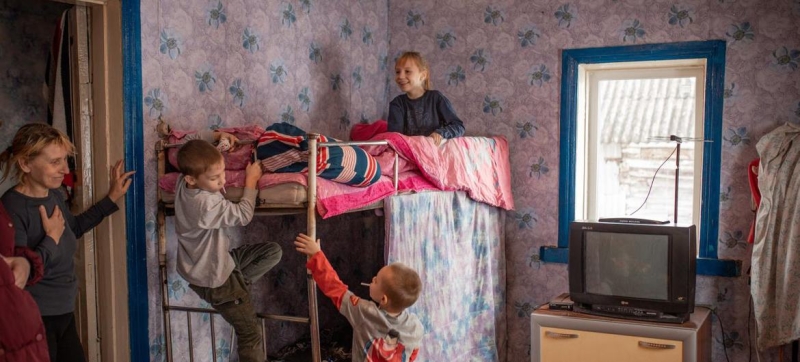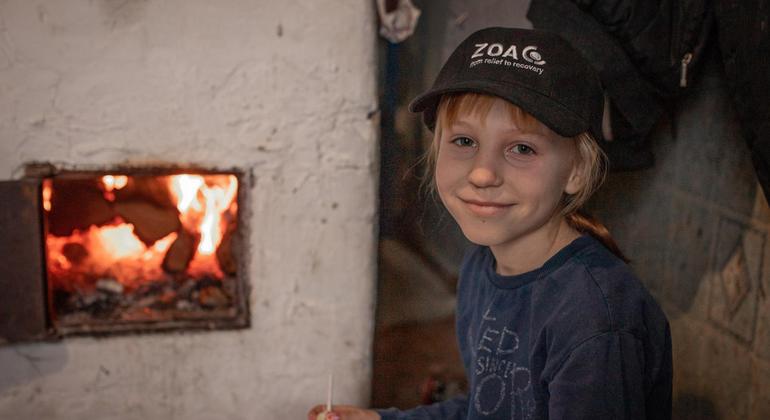
Olga and her children fled to the Chernigov region. Ukraine: humanitarian organizations provided support to more than 2 million people in winter Humanitarian assistance
Spring brought warmth to Ukraine, and Olga, a mother of three children, remembers the past winter with gratitude for the support provided to her.
Last year, her family was forced to leave their hometown in eastern Ukraine due to fighting. Fortunately, Olga found refuge in the village of Kozilovka, Chernihiv region, thanks to an online advertisement for housing for internally displaced persons.
But, recalling the condition of her new house, Olga describes it as depressing: “No one lived in the building for some time, and it was in poor condition. Cracks appeared in the old wooden window frames, allowing wind and rain to enter. I was worried that we wouldn’t be able to warm the house in the cold.”
The situation changed for the better when Olga received help from the organization ZOA, which cooperates with the UN Office for the Coordination of Humanitarian Affairs (OCHA) and funded by the Ukrainian Humanitarian Fund.
“Humanitarian workers installed new windows and provided us with firewood,” he says with a smile Olga. “This way we could enjoy the comfort and safety of our new home in the winter.”

Winter cold in Ukraine usually begins around October and lasts until the end of March, exacerbating the situation in a country where, according to the UN, almost 14.6 million people are in need of assistance.
“The freezing winter months are extremely difficult for people to survive, not to mention the fact that their homes and critical civilian infrastructure are constantly under attack,” explains Sarah Hilding der Weduven, head of OCHA. in Ukraine.
More than 110 humanitarian organizations have developed a joint Winter Response Plan. In the six months since its creation, it has helped more than 2 million Ukrainians, including Olga.
The areas located near the front line received the most support. as their residents bear the brunt of fighting, widespread destruction, job losses and limited access to basic services. In particular, assistance was sent to areas with the largest number of internally displaced persons, for example, to the Dnieper, Donetsk and Kharkov regions.
More than 900 thousand Ukrainians received financial support and essential goods. Warmth items such as blankets and sleeping bags were provided to more than 400,000 people, and winter clothing to 300,000. In addition, district heating support services helped 400 thousand people. The housing in which Ukrainians fleeing the war took refuge was insulated and renovated. Humanitarian organizations supporting the government’s efforts are already receiving requests for help for the coming winter.
“Attacks on energy infrastructure have weakened Ukraine’s already vulnerable energy system, which could lead to dire consequences for people when temperatures drop below -20 degrees Celsius next year. To help Ukrainians survive the next harsh winter, we must act now,” emphasized Hilding der Weduven.
